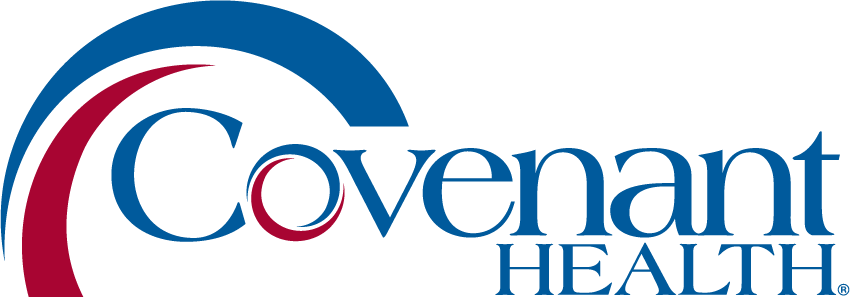Ivan Cordrey, PhD, DABR, and Partners Pioneer Groundbreaking Concepts in Radiation Oncology
A Visit With Ivan Cordrey
Thompson Cancer Survival Center is blessed with some of the most brilliant physicists and researchers in the field of radiation oncology. One such physicist is Ivan Cordrey, Ph.D., DABR, senior medical physicist at Thompson Cancer Survival Center at Cumberland Medical Center.
I recently spent an afternoon with him in Crossville learning in depth about the 10 articles he and his research partners have published in radiation oncology over the last several years. By the end of our discussion I wasn’t sure if I felt more energized or more overwhelmed by the depth of discovery and learning I had just experienced! Below is an overview of the very complex and groundbreaking concepts pioneered by Dr. Cordrey and partners Dharmin Desai, PhD, DABR, and Lee Johnson, PhD, DABR, that are truly revolutionizing radiation treatment planning.
Optimization for Radiation Therapy
A Covenant Health article on radiation therapy provides a general description of how photon therapy works. The dose of radiation a patient will receive is determined by how far the radiation must travel in the body to reach the tumor (the area of the planning target volume, or PTV). The shape of the treatment field, or target area for the radiation, is determined by the volume of that area and the proximal organs and tissues that must be spared from as much radiation as possible. In radiation oncology, calculating the maximum dose to deliver to the treatment area while delivering the minimum dose to healthy surrounding tissues is called optimization.
Although the treatment planning machines can calculate how much dose is needed to cover a treatment area and what the shape of the treatment field needs to be, there has never been a formula to determine the minimum unavoidable extra dose needed to surround the tumor (dose spill, or R50%). Optimization has historically been achieved by the planner (dosimetrist or physicist) running a series of scenarios through the treatment planning system until they felt they achieved the best result possible.
Research and Findings in Radiation Oncology
Treatment planning is generally easier for spherical targets. Tumors, however, grow in all sorts of shapes. The shape of the tumor determines the surface area of the tumor, and a sphere is minimum surface area object for a given volume. The surface area of an object affects the volume of the dose spill — the greater the surface area, the larger the volume that gets the dose spill. Dr. Cordrey, Dr. Desai, and Dr. Johnson’s first two research papers, applied separately to the lungs and the brain, concluded that the volume and the surface area of the planning target volume influence the volume of the intermediate dose spill — the Surface Area Effect.
Their next two published research papers applied the concept stated in the first two papers. They conclude that assuming the smallest possible surface area for a given volume of a tumor is a sphere and the treatment planning areas are determined by calculations based on tumor surface area and volume, it’s possible to create a formula to predict the intermediate radiation dose spill that is as low as reasonably achievable, no matter the shape of the tumor. This formula is called “R50%_analytic.” The R50%_analytic acts as a compass, pointing the way to get the desired optimized treatment area. Although this concept can apply to all tumors, separate papers were published for lung and brain.
While the previous publications provided the compass, the next pair of publications provide the map to achieving the optimal treatment plan, reducing low-to-intermediate dose spill. They introduce a planning technique based on the R50% calculations called “ask for it” (AFI) optimization. With this, the team uses optimization formulas to “ask” the machine to push down volumes of radiation in some areas and shift it in others until it has achieved a plan that lowers the dose spillage as much as possible, while still completely treating the planned target volume.
Dr. Cordrey and partners’ subsequent research combines the concepts of the previous studies by applying them to determine if the PTV location in the brain affects the intermediate dose spill (R50%) volume or shape (considering proximity to critical structures and isocenter in the case of multiple metastases). It concludes that one can achieve basically the same R50% optimization no matter where the tumor(s) are in the brain, even if they are close to the brainstem. They then extend their concepts by proposing universal limits for intermediate dose spill in brain treatments and comparing the limits to clinical data sets from two other studies and from the University of Alabama.
This study was featured in the Journal of Applied Clinical Medical Physics and won “Best Publication by a Medical Physicist” from the Southeast Chapter of the American Association of Physicists in Medicine. Dr. Cordrey was recently notified that the publication was one of the most downloaded papers on the journal’s website between January and December 2022.
Often, radiation oncologists must radiate more than one tumor in a patient’s brain. Dr. Cordrey and partners’ final publication applies their novel concepts to multiple tumors being treated in the same region of the brain when the intermediate dose spill will overlap with a nearby target. It develops the concept of “fair volume estimate” (FVE).
This concept gives a set of calculations for determining the amount of overlapping radiation dose in the treatment area that should be apportioned to each tumor in the area, based on the volume and surface area of those tumors. While this may seem extremely complex, it is understandable that a smaller tumor should not receive the same volume of dose spill radiation in the overlapping treatment field as a larger tumor. It is reasonable to cover a smaller volume of tumor with a smaller volume of radiation and a larger volume of tumor with a larger volume of radiation. This paper establishes a set of calculations to fairly apportion overlapping dose spill for brain tumors.
Ongoing Research in Radiation Oncology
Dr. Cordrey and his partners continue to research and pioneer more precise and life-saving ways to treat oncology patients with radiation therapy. We are so proud to have Dr. Cordrey as part of Thompson Cancer Survival Center’s team and eagerly anticipate universal industry adaptation and utilization of the improvements his discoveries have made in radiation treatment planning for cancer.
How Does Dr. Cordrey “Unplug”?
As I was leaving my interview with Dr. Cordrey, he mentioned that he would be meeting with his research partners that evening, after a full day of treating patients and meeting with me. It led me to ask, “Dr. Cordrey, do you ever ‘unplug’? And if so, what do you do to relax?” Dr. Cordrey responded that he gardens! Characteristic of his intensity when pursuing his interests, he doesn’t “just garden” — he and his wife have created a refuge for native plants and wildflowers, called Hillsdale Wildflower Refuge, on their property in Cookeville. Together, they locate and transplant local wildflowers that are in danger of being destroyed to their property. In some cases they create entirely new habitats on their grounds to accommodate the plants, such as the addition of a swamp, a shale barren and a limestone mini-cliff.



